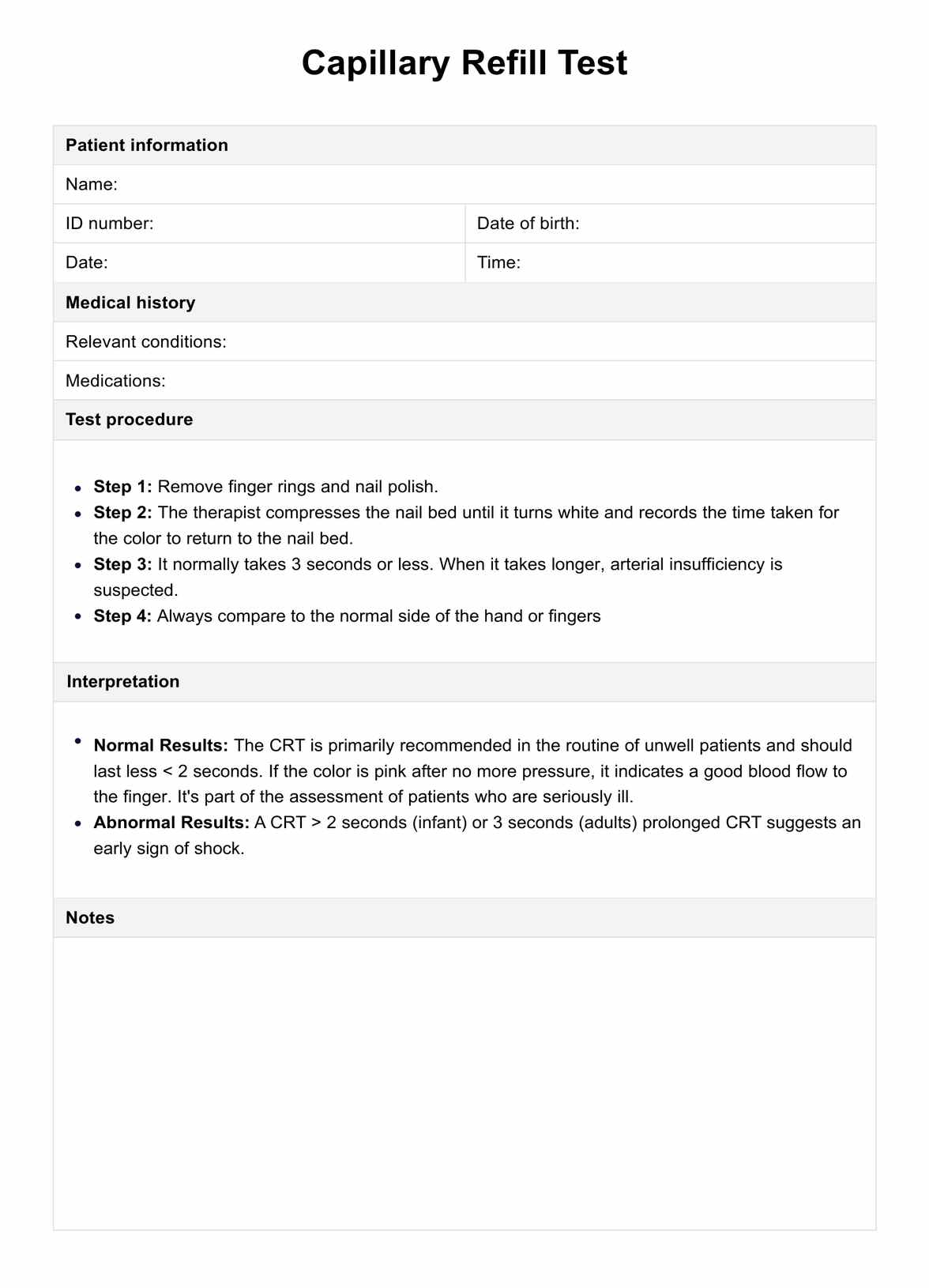The Capillary Refill Test indicates the status of blood flow to tissues. It can help assess peripheral perfusion and detect circulatory or cardiovascular abnormalities.

Capillary Refill Test
Explore the Capillary Refill Test's clinical significance, methodology, and diagnostic applications in medical practice.
Use Template
Capillary Refill Test Template
Commonly asked questions
Yes, brisk capillary refill, typically defined as a refill occurring in less than 2 seconds, is considered normal and indicates good blood flow.
The normal capillary refill time is less than 2 seconds. This indicates healthy blood circulation to the extremities.
EHR and practice management software
Get started for free
*No credit card required
Free
$0/usd
Unlimited clients
Telehealth
1GB of storage
Client portal text
Automated billing and online payments











